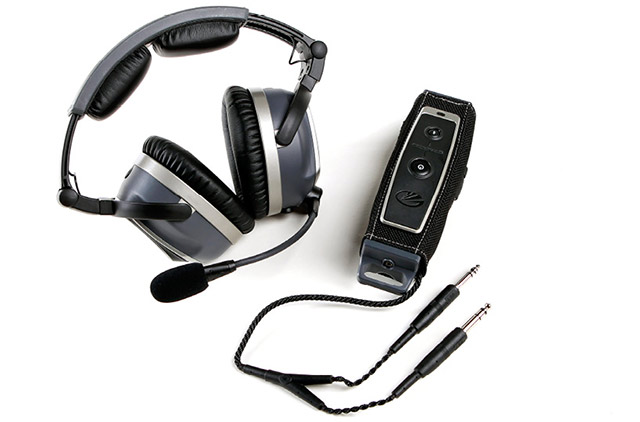My first flight with Tango
Wireless headsets are an attractive concept, especially for pilots (like me) who abhor cockpit clutter.
Lightspeed is the first premium brand to jump into this seemingly ripe market with its Tango wireless headset ($800 retail). But those expecting the same excellent audio clarity, comfort, and ease of use found in Lightspeed’s other products are likely to be disappointed. Going cordless is a big step forward, but Tango falls short in other ways.
I found the Tango sound quality tinny, and the microphone slightly warbled. On the ground, there are two items to keep charged: the headset and its panel interface. And if power to the panel interface is lost, the Tango completely shuts down. You can’t transmit or receive until you plug in a backup wire between the headset and panel interface—and that can be tricky to do at night, in bad weather, or during the high-workload portions of any flight.
The Tango is a good-looking headset right out of the box. It’s got two lithium-ion batteries: one goes inside the headset, and the other clips into the remote panel interface. The batteries come almost fully charged (they take about two hours to fully charge when plugged in to a wall socket via mini-USB cables) and provide up to 12 hours of power.
The internal battery adds to the Tango’s total weight of 18 ounces, about four ounces more than the company’s popular Zulu model. The Tango’s active noise reduction is extremely effective at reducing background noise.
The panel interface is an invention of Lightspeed’s own design that blends analog and digital controls. It is easy to sync with a smartphone, and provides the ability to connect up to six devices for listening to music or making telephone calls.
My first flight with Tango was in a Cessna 172 on a 1.5-hour instructional flight with a fellow pilot wearing a conventional headset. Communications via the aircraft radio and intercom were normal, but the Tango earphones provided a tinny sound, and the mic seemed to cut out momentarily, and its transmissions were slightly garbled on both the intercom and radio.
My second flight was a two-hour night instructional flight in a Cessna 182, and that’s where I encountered a Tango shutdown. On taxi out, the panel interface ran out of juice and the system went completely quiet. I couldn’t transmit or receive on intercom or radio. Tango’s panel interface comes with a cleverly designed backup cord to connect to the headset in just this kind of scenario. But it required digging the interface out of a pocket, finding the cord, and physically connecting it to the headset in the dark on a taxiway. In the scheme of things, that wasn’t the worst place to lose power. I could simply stop and fix it. But it brought home Tango’s reliance on the batteries working at all times. When the double-A batteries in other ANR headsets quit, it’s a hassle but you can grin and bear the additional noise until you have time to reach into your flight bag and (hopefully) come up with some fresh batteries. If the proprietary batteries in a Tango quit, you’ve got to take immediate action to restore communications. (When the backup cord is attached, the Tango transmits and receives without ANR.)
In sum, the Tango is a stylish, comfortable, well-designed headset that gets rid of some myriad wires that can make a GA cockpit resemble Frankenstein’s laboratory. Lightspeed obviously put a great deal of thought and effort into the Tango and deserves credit for bringing the first premium wireless headset to market. But to this reviewer, the inherent drawbacks of more (specialized) batteries, more devices to charge, more weight, another essential component (the panel interface) to misplace, and another system to manage in flight outweigh the benefits of going wireless.
Someday wireless cockpit communications will be the norm, but that day is still in the future.
Price: $800
Contact: www.lightspeedaviation.com
Email [email protected]




